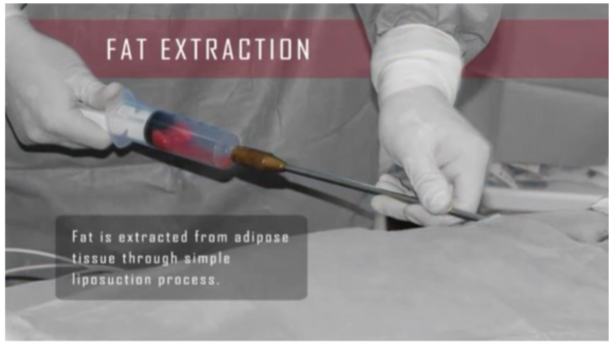Mini Review Download PDF
New Approaches in Stem Cell Research
Received: May 16, 2019; Published: May 22, 2019
Abstract
This therapy is a modern medical approach for the treatment of many diseases such as neurodegenerative disorders, cardiovascular diseases, diabetes, rheumatoid Arthritis and many more. This work reviewed briefly the history, recent development and the uses and prospect of treatment of disorders using stem celltherapy.
Keywords: Stem Cell; Recent Advances; History; Application
Introduction
Stem Cells are undifferentiated biological cells with the natural capacity to regenerate and differentiating into various types of particular cell types and couldreplicate (via mitosis) to makemore. They have the capacity for self-regeneration over long period and can differentiate into variouscells and so on [1,2]. This therapy is an extremely good and recent medical advancement that seek to treat various medical disorders from its origin.
Sources
They can be obtained from many cell types [3].
Types
Two main types exist in mammals: Embryonic and adultstem cells. Others are hematopoietic, mesenchymal, neural, epithelial, and skin stem cells[4].
Timeline In Stem Cell Research
Achievements so far spans from nineteen eighty nine through to year two thousand and sixteen and these range fromthe first “’knockout”’ mouse, embryonic stem cells, beating heart cells, new heart muscle, cardiac stem cells, heart cells from fats, heart cells from skin and newblood.
Applications
Uses and applications of stem cells in toxicology
The fact that stem cells are more readily available, have unlimited proliferative ability and easily generate other cell type make them very suitable to toxicological applications[5].
Uses in Regenerative Medicine
The most recent and emerging branch of medicine is regenerative medicine and it tackles active replacement of particular tissue and/or organ of candidates suffering from severe tissue and/or organ damage or chronic medical conditions, especially where the patients’ own restorative responses are not sufficient. Some Prospects in regenerative medicine include those of umbilical cord stem cells, such as type I & II diabetes mellitus, Krabbe’s disease treatment, hematopoiesis in neuroblastoma [6].
Treatment with Adipose Tissue-Derived Stem Cells (ADSCs)
This focuses on their potential for the following: bone regeneration [7], fat reconstruction [8], cardiovascular and myocardial regeneration [9,10], hepatic regeneration [11],pancreatic regeneration [12].
Stem Cells Treatment Procedure
The treatment process follows four simple stages: Harvesting, Separation/isolation, activation and treatment (Figures 1-6).
Ethical Issues
Majority of the issues of ethics about stem cell research have to do with the use of embryonic stem cells since these are obtained from fertilized embryos and are damaged in the research process eventually. Although, they are actually sourced from in vitro fertilization from fertility clinics with the prior knowledge and consent of the donor[13,14].
Future Prospect
Future perspectives of stem cell research include low blood supply, baldness, tooth regeneration, deafness, blindness and vision improvement, bone regenerations and diabetes.
Conclusion
There appears to be a bright future for stem cell therapy as treatment options for the diseases that presently defer other medical interventions.
References
- TG Shrirari (2011) Cancer stem cells- Therapeutic Boon. Journal of cancer Science and Therapy 3:197-200.
- M Cruz, A Siden, DR Tasat, JS Yakisich (2010) Are all Gloma cells cancer stem cells?. Journal of cancer Science and Therapy 2: 100-106.
- H Gottlieb, TW Klausen, M Boegsted, BS Olsen, GS Lausten (2011) A clinical study of Circulating Cellular and Humoral Biomarkers involved in Bone Regeneration following Traumatic Lesions. Journal of stem cell Research and Therapy 1:108.
- JA Thomson, J Itskovitz-Eldor, SS Shapiro, MA Waknitz, JJ Swiergiel, et al. (1998) Blastocysts Embryonic stem cell lines derived from human. Science 282(5391): 1145-1147.
- MR Alison, R Poulsom, R Jeffery, AP Dhillon, A Quaglia, et al. (2000) Hepatocytes from nonhepatic adult stem cells. Nature 406: 257-258.
- C Mason, P Dunnill (2008) A brief definition of regenerative medicine. Regenerative medicine 3(1): 1-5.
- W Lu, K Ji, J Kirkham, Y Yan, AR Boccaccini, et al. (2014) Bone tissue engineering by using a combination of polymer/bioglass composites with human adipose-derived stem cells. Cell and Tissue Research 356: 97-107.
- KE Weichman, PN Broer, N Tanna, SC Wilson, A Allan, et al. (2013) The role of autologous fat grafting in secondary microsurgical breast reconstruction. Annals of Plastic Surgery 71: 24-30.
- MI Schaun, B Eibel, M Kristocheck, G Sausen, L Machado, et al. (2016) Cell therapy in ischemic heart disease: interventions that modulate cardiac regeneration. Stem Cells International.
- H Nagata, M Ii, E Kohbayashi, M Hoshiga, T Hanafusa (2016) Cardiac adipose-derived stem cells exhibit high differentiation potential to cardiovascular cells in C57BL/6 mice. Stem Cells Translational Medicine 5: 141-151.
- D Xu, T Nishimura, M Zheng, M Wu, H Su (2014) Enabling autologous human liver regeneration with differentiated adipocyte stem cells. Cell Transplant 23: 1573-1584.
- W Hefei, R Yu, W Haiqing, W Xiao, W Jingyuan, et al. (2015) Morphological characteristics and identification of islet-like cells derived from rat adipose-derived stem cells cocultured with pancreas adult stem cells. Cell Biology International 39: 253-263.
- LF Porrata, DJ Inwards, SM Ansell, IN Micallef, PB Johnston (2011) Day 14 Peripheral Blood Lymphocyte/monocyte Ratio Post-autologous Peripheral Hematopoietic Stem Cell Transplantation and Survival in Diffuse Large B-cell Lymphoma. Journal of Stem Cell Research 1: 103.
- H Nagata, M Ii, E Kohbayashi, M Hoshiga, T Hanafusa (2016) A Kakar (2011) Towards Efficient, Broad and Accessible Electronic Scientific Publication. Journal of Transplantation Technologies and Research 1:108.






